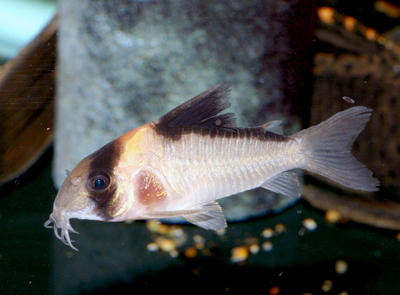Page 1 of 1
Cory I.D.
Posted: 15 May 2007, 12:43
by Polit
Posted: 15 May 2007, 13:17
by kim m
What you have there is Corydoras C-121 ...by some considered a variety of C. burgessi, and other consider it a seperate species.
I have a trio of these. Had six, but 3 died from no obvious reason. They seem to travel bad. Should be realtively easy to spawn.
Posted: 15 May 2007, 18:51
by Coryman
The fish is a C121, and is considered by some as a variant of C. burgessi, but in actual fact it actually looks closer to C. adolfoi or C. duplicareus. Compare.
C. sp C121

picture courtesy Corydoras world
C. adolfoi

picture courtesy Corydoras world
C. duplicareus

picture courtesy Corydoras world
C. burgessi

picture courtesy Corydoras world
You will see that C. burgessi is quite a stocky fish and does not have the black band along the ridge of the back and all the rest do. The amount of black in the dorsal is variable in all four species.
Another interesting fact I found out with a group of C121 I was given when they were quite small, 20.0 mm SL. they all displayed the clear patch behind the gill cover. However some 6 months down the road none of the fish show the clear patch and all resemble C. adolfoi.
Ian
Posted: 16 May 2007, 01:08
by apistomaster
Hi Ian,
I use the translucent opercula showing the red gills behind them as diagnostic of C121. Is that feature unique to C-121?
I just lost a tank of breeders after bring home some Hemigrammus pulcher from the LFS without quarantining them. It was a fatal mistake; they and the C-121's died.
Some people never learn.

Posted: 16 May 2007, 10:16
by Coryman
Larry,
there are at least another three species, which display the clear patch behind the gill cover, C140 (C. imitator) is listed as one, but there are C. arcuatus and C. narcissus types that also have the same feature. Personally I am not convinced they are distinct species.
Ian
Posted: 16 May 2007, 10:45
by Polit
Thank you, I did have my suspicions.



